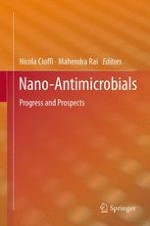2012 | OriginalPaper | Buchkapitel
9. Metal-Containing Nano-Antimicrobials: Differentiating the Impact of Solubilized Metals and Particles
verfasst von : Angela Ivask, Saji George, Olesja Bondarenko, Anne Kahru
Erschienen in: Nano-Antimicrobials
Verlag: Springer Berlin Heidelberg
Aktivieren Sie unsere intelligente Suche, um passende Fachinhalte oder Patente zu finden.
Wählen Sie Textabschnitte aus um mit Künstlicher Intelligenz passenden Patente zu finden. powered by
Markieren Sie Textabschnitte, um KI-gestützt weitere passende Inhalte zu finden. powered by
